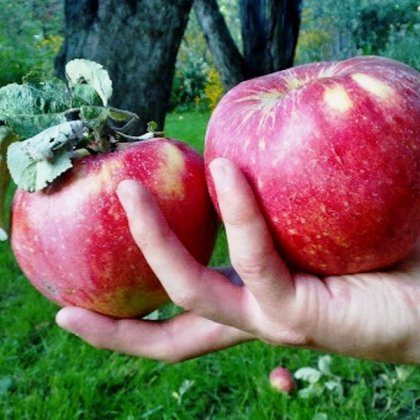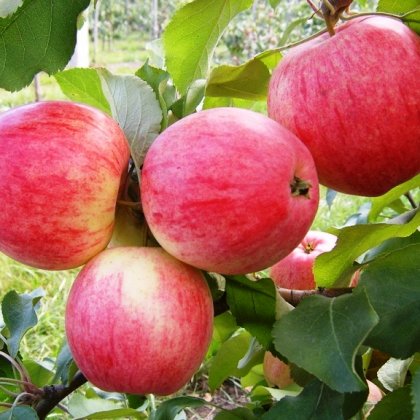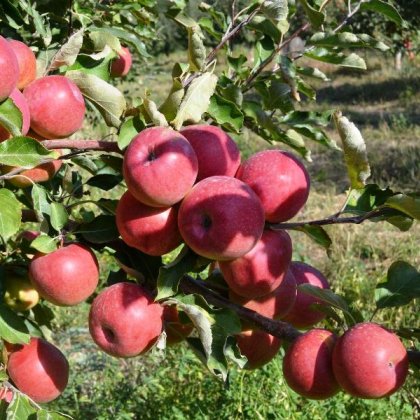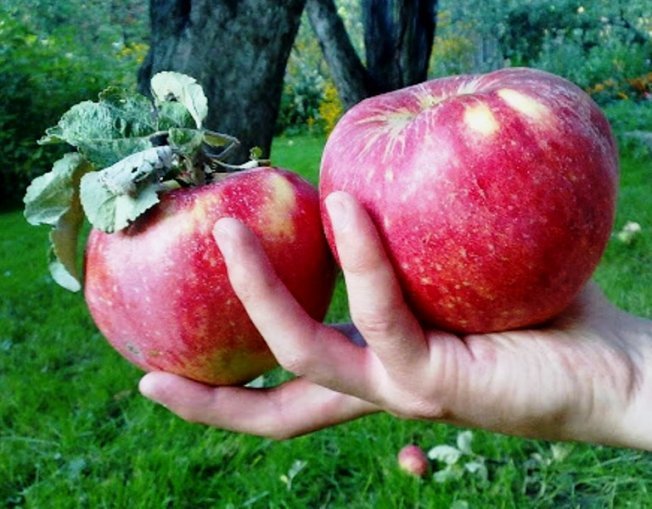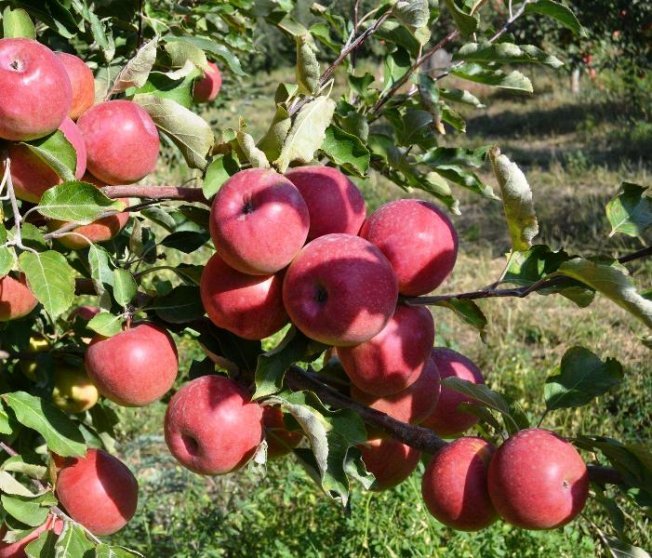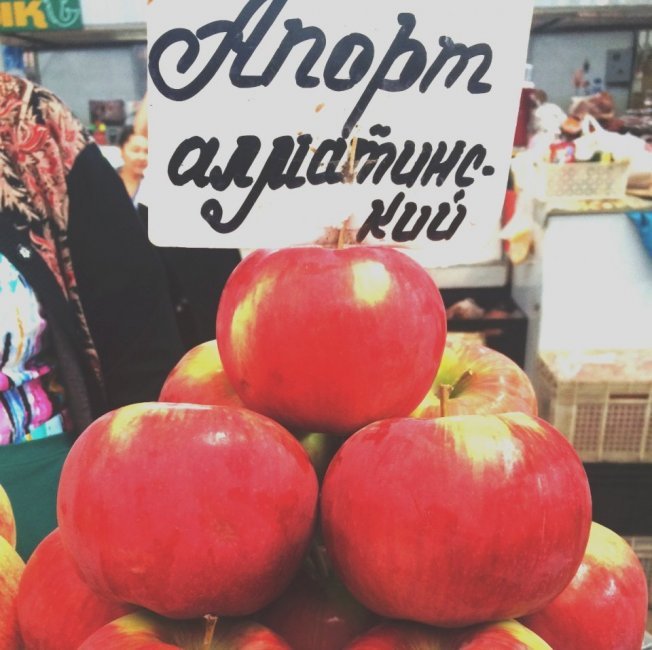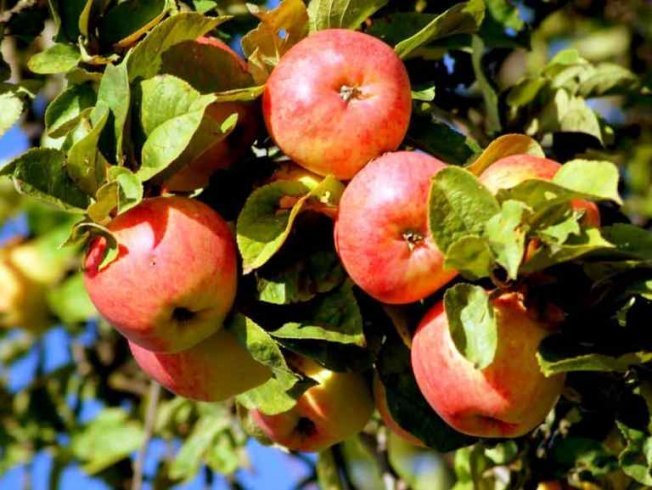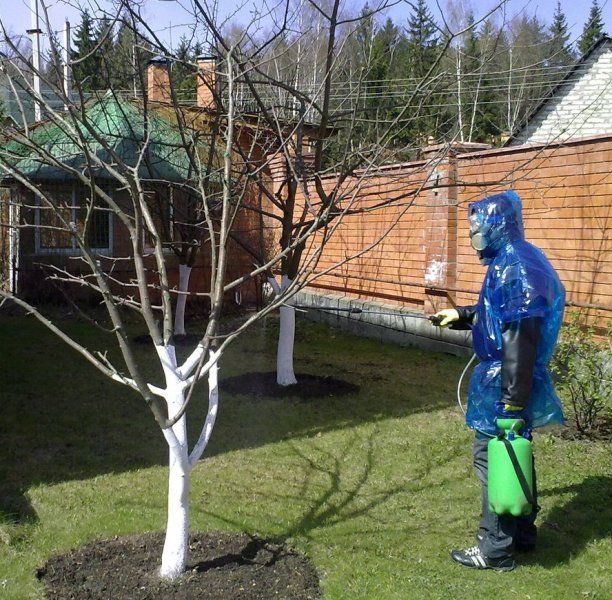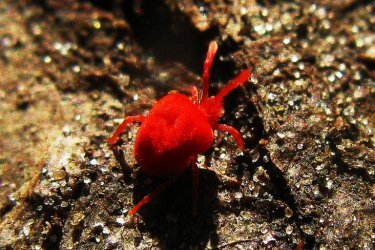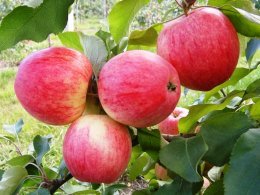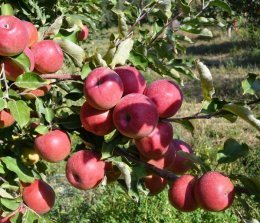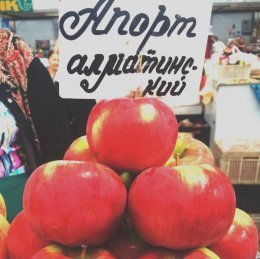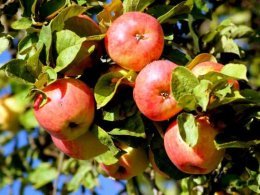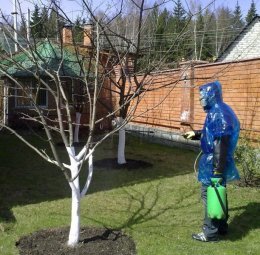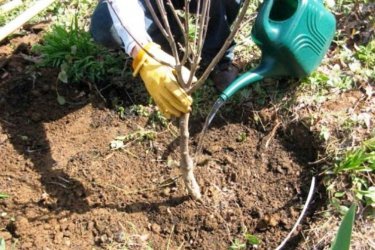Apple tree variety Aport, high-yielding, with large souvenir fruits of excellent taste

The first mentions of the ancient variety date back to the 12th century; 500 years later it was spoken of as ancient, the most famous and widespread. There is still debate about the origin of the Aport apple tree; Italy, Ukraine, and Turkey are called its homeland. In the 9th century, Russia represented the fruits of the tree at exhibitions of horticultural achievements and repeatedly took prizes.
Features and Specifications
In industrial gardening, the variety has been replaced by new varieties that are more resistant to diseases and natural disasters, but every amateur gardener still dreams of growing a fragrant fruit weighing half a kilo, or even more, on his plot.
The Aport apple tree variety is classified as late-ripening or winter. Fruiting begins late, at 7-8 years of age, but it lasts for more than 40 years.
Aport pleases with a bountiful harvest every year; up to 150 kg of apples can be harvested from one tree.
The apple tree is larger than average in size and forms a sparse but powerful crown. Strong branches extend from the trunk at a large angle.
Each fruit receives a sufficient amount of light, during the ripening period it acquires a bright color and becomes very juicy. The apples are delicious, sweet and sour, with a wine-like aftertaste.
Ripening period is the second half of September. The fruits are transportable, shelf life in the cellar or refrigerator is 4 months.
Disadvantages of the variety
The problems of the variety are:
- Low frost resistance, trees can freeze even in the temperate climate zone of the middle zone. Gardeners claim that wintering problems can be prevented by grafting Aport onto frost-resistant varieties.
- Irregular fruiting, which is fully compensated by the abundance of large fruits in good years.
- Relative resistance to scab and fruit rot.
Variety varieties
The apple tree has many clones that differ from the Aport variety in frost resistance, color and taste of the fruit. We indicate them in the table.
| Clones of the variety | Main differences |
| Alexander | It is distinguished by yellowish flesh and a more pronounced speckled-striped pattern on the skin of the fruit. |
| Blood red | The color of the peel is intense red, the pulp is medium-grained with a spicy aftertaste. Fruiting cycle - four years |
| Alma-Ata | The fruit has a bright red blush and retains its taste until May; apples grown at an altitude of no less than 900 m and no more than 1200 m above sea level have the best quality. Fruit weight can reach 900g |
| White | A very productive summer variety, fruits of a yellowish tint, with loose juicy pulp, weight - 300-500g |
Less common clones are Pink, Ukrainian, Brilliant, and Huge.
Planting and care
When planting a tree, you should adhere to the following rules:
- the best soil for the Aport apple tree is drained loam;
- the planting site should be well illuminated by the sun, the depth of groundwater should be more than 1 m, otherwise it will be necessary to create an artificial hill from fertile soil and equip a drainage system;
- the neck of the tree should not be allowed to deepen below ground level;
- A mixture of peat, humus or compost with fertile soil is added to the planting hole to increase soil fertility.
Next you will need to comply simple rules of care:
- systematically remove weeds from the root circle and loosen the soil;
- in dry, hot weather, water the seedling 1-2 times a week, it is recommended to add at least 20 liters of water;
- To reduce moisture loss, the tree trunk circle can be covered with a layer of mulch.
Be sure to apply fertilizer:
- Mineral saltpeter (30 g per 10 liters of water) or 100 g of superphosphate in combination with 60 g of potassium per 10 liters of water are used as root spring fertilizers.
- As summer supplements: 45 g of nitrophoska and 10 g of sodium humate, dissolved in 10 liters of water.
- For foliar applications, use a urea solution (30 g per 10 liters of water).
- Slurry and chicken manure solution can be used as organic root feeds.
Trimming
Aport, like other varieties of apple trees, requires systematic pruning:
- The first is carried out immediately after planting; it stimulates the growth and appearance of shoots.
- Next 3 years, crown-forming corrective pruning is carried out.
- Regular sanitary pruning is carried out to thin out the crown.
- An adult tree requires rejuvenating pruning.
Disease prevention, pest control
The Aport variety is not particularly resistant to scab, so it is recommended to carry out preventive spraying of apple trees with a solution of copper sulfate (50g) and urea (300g) per 10 liters of water.
If scab has already been detected, then the tree is treated:
- 7% urea solution;
- 1% solution of copper sulfate;
- with the drug HOM (40g per 10l of water).
You can spray before flowering and during fruit set.
A dangerous pest for apple trees is the codling moth. To combat it, use a solution of chlorophos (20 g per 10 l of water) or karbofos (30 g per 10 l).
When infested by green aphids, treat with a 0.3% solution of entobacterin.
Spraying against pests is carried out every 2 weeks; 3 weeks before harvesting, treatments are canceled.
Pests

